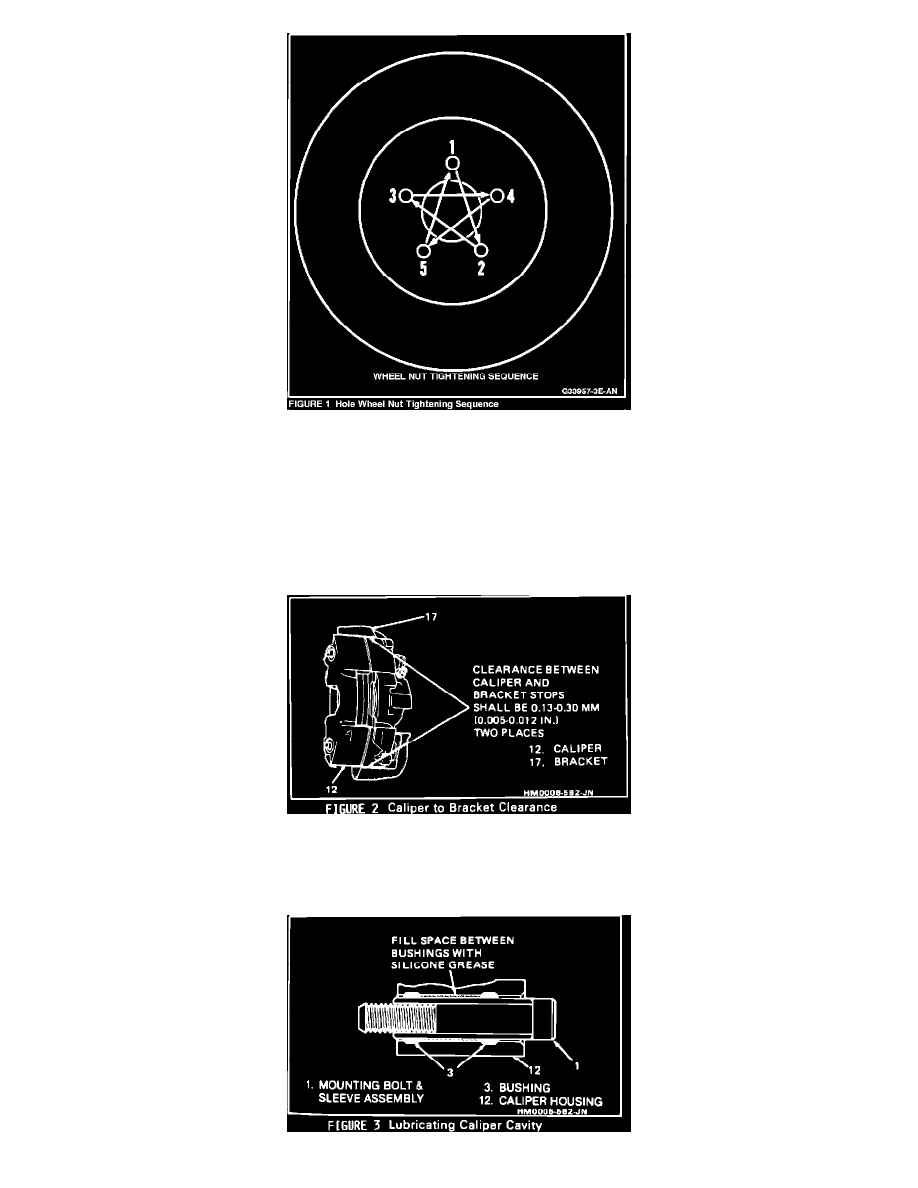Skylark V6-173 2.8L VIN X 2-bbl (1984)

(To prevent distortion of the hub and rotor assembly, wheel nuts should be tightened in two steps using a suitable torque wrench and following
the alternate nut tightening sequence shown in Figure 1. Applying torque in two steps helps reduce distortion by providing a gradual and even
distribution of clamp load over the surface of the hub.)
2.
Caliper Drag
Disc brake pads (inboard and/or outboard) must drag sufficiently to contact high spots on the rotor when brakes are not applied. Caliper drag is
usually caused by interference between the caliper and the bracket stops on the steering knuckle or by binding of the caliper mounting bolt sleeve
bushings.
(Caliper to bracket stop clearance should be checked with calipers in position and the mounting bolts torqued to specification. Clearance,
measured at the two locations shown in Figure 2, should be within specifications for the vehicle tested. If clearance is too great, the caliper may
move and cause a clunking noise when brakes are applied. If there is not enough clearance, the caliper may drag on the knuckle. Caliper bracket
stops can be filed to adjust clearance.)
